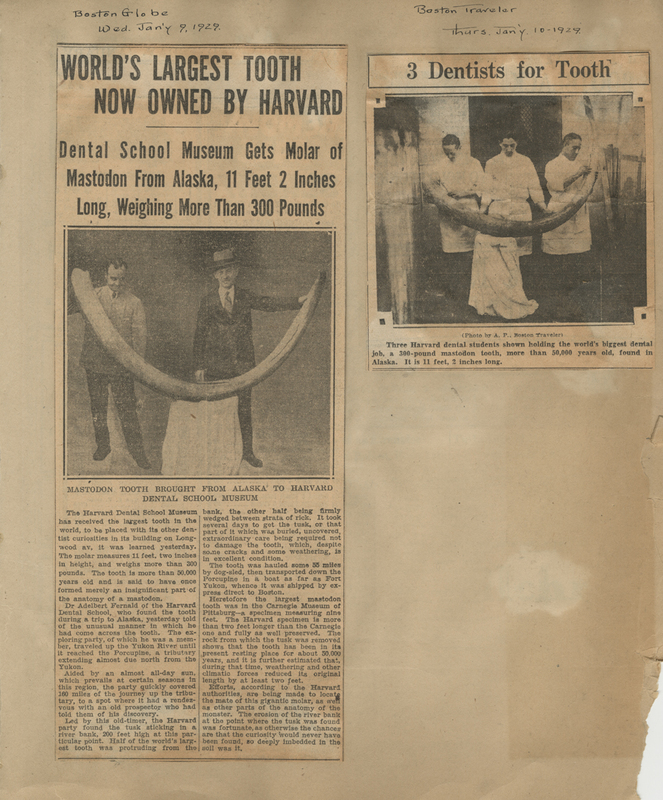Introduction
On January 9, 1929, the Boston Globe ran an unusual headline: "World's Largest Tooth Now Owned by Harvard." This was no human tooth, but a mastodon's tusk, estimated to be 50,000 years old, discovered in a bank of the Porcupine River, beyond the Arctic Circle. Over 11 feet long and weighing 300 pounds, it was one of the largest such specimens ever found. The tusk traveled by dogsled and boat until it found its resting place in the Museum of the Harvard Dental School.
Nearly as old as the Dental School itself, Harvard's Dental Museum was originally intended to display specimens of mechanical dentistry prepared by graduating students. It soon became a repository for specimens of human and comparative odontology, pathology, and anatomy, instruments, models, photographs, and lantern and stereoscopic slides. The Museum also housed some unusual historical items, such as dentures of Ralph Waldo Emerson and Oliver Wendell Holmes, the dental casts of George Parkman used to convict John White Webster of murder in 1850, the contents of an antique dentist's office, and moulages of facial reconstructions of wounded World War I soldiers. By 1930, there were over 14,000 specimens in the Dental Museum—including the Alaskan mastodon tusk.
The published Announcement of the Dental School for 1937 has a brief but detailed description of the Dental Museum, and information about the collection had been included in the annual catalogs for the past sixty years. In the following year's edition of the Announcement, however, no entry for the Museum is included, and one never appears again.
But where is the Dental Museum now? Although it prospered until the late 1930s, the Dental Museum became a casualty of the growth and changing nature of dental education at Harvard, and its rich collections were placed in storage or dispersed. Some instruments and relics, including the Parkman casts, along with the existing historical records of the Museum have been preserved in the Countway Library, and others specimens have since been identified in the Warren Anatomical Museum. Many more specimens, unfortunately, have been lost—and the fate of the mastodon tusk remains a mystery.

